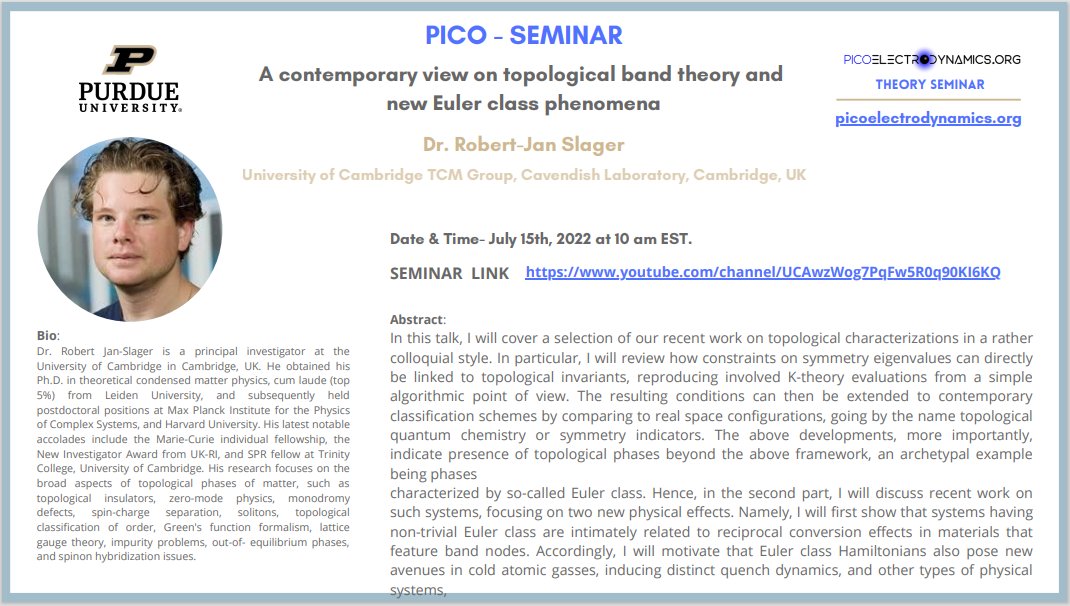Seminar Link: Picoelectrodynamics Theory Network - YouTube
A Contemporary View On Topological Band Theory & New Euler Class Phenomena
In this talk, I will cover a selection of our recent work on topological characterizations in a rather colloquial style. In particular, I will review how constraints on symmetry eigenvalues can directly be linked to topological invariants, reproducing involved K-theory evaluations from a simple algorithmic point of view. The resulting conditions can then be extended to contemporary classification schemes by comparing to real space configurations, going by the name topological quantum chemistry or symmetry indicators.
The above developments, more importantly, indicate the presence of topological phases beyond the above framework, an archetypal example being phases characterized by the so-called Euler class. Hence, in the second part, I will discuss recent work on such systems, focusing on two new physical effects. Namely, I will first show that systems having non-trivial Euler classes are intimately related to reciprocal conversion effects in materials that feature band nodes. Accordingly, I will motivate that Euler class Hamiltonians also pose new avenues in cold atomic gasses, inducing distinct quench dynamics, and other types of physical systems, notably phonon spectra as well as electron systems.
By Dr. Robert-Jan Slager
Dr. Robert Jan-Slager is a principal investigator at the University of Cambridge in Cambridge, UK. He obtained his Ph.D. in theoretical condensed matter physics, cum laude (top 5%) from Leiden University, and subsequently held postdoctoral positions at Max Planck Institute for the Physics of Complex Systems, and Harvard University. His latest notable accolades include the Marie-Curie individual fellowship, the New Investigator Award from UK-RI, and SPR fellow at Trinity College, University of Cambridge. His research focuses on the broad aspects of topological phases of matter, such as topological insulators, zero-mode physics, monodromy defects, spin-charge separation, solitons, topological classification of order, Green's function formalism, lattice gauge theory, impurity problems, out-of-equilibrium phases, and spinon hybridization issues.
